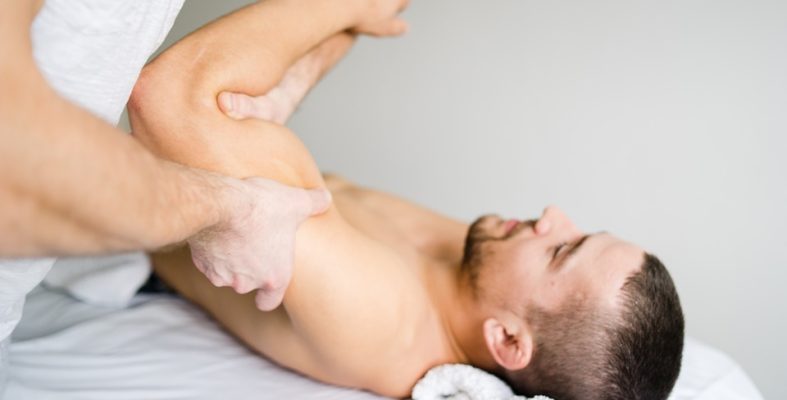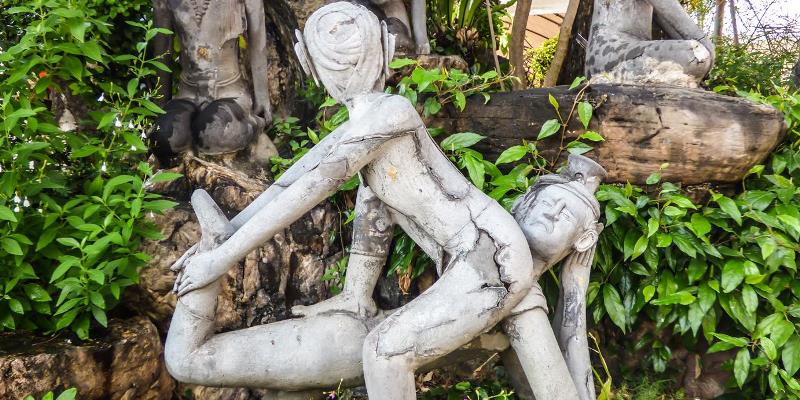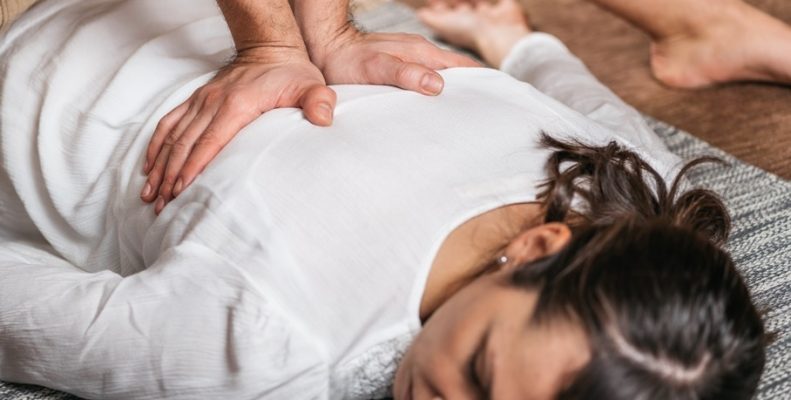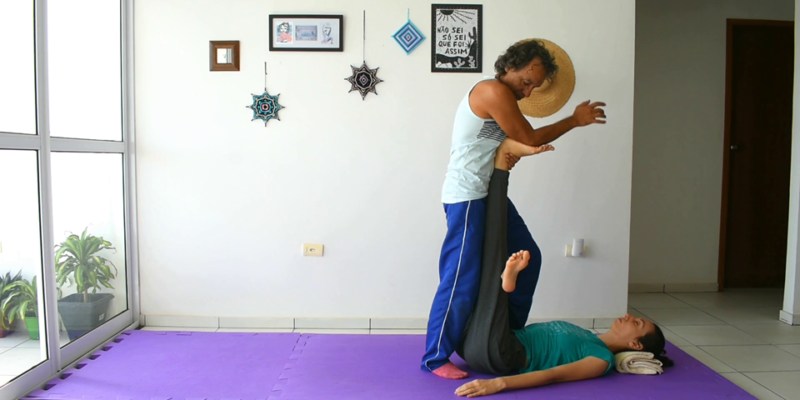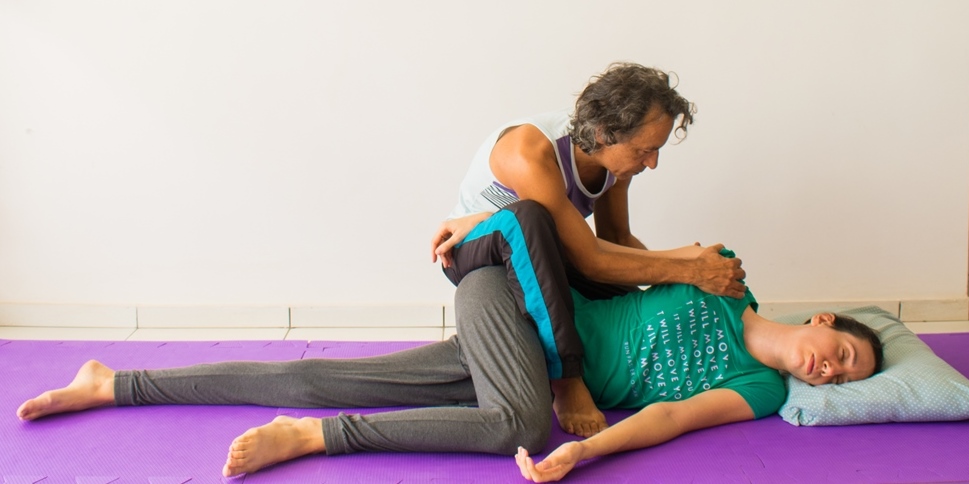
In this post, we’ll take a look at several joint mobilization techniques in Thai Massage (you will also find a demo video at the end of this article). Mind that Thai Massage is a lot more than only massage, in fact, it’s a type of traditional bodywork that brings in an incredible number of techniques to “do the job.”

Apart from the classical massage techniques, such as pressing, rolling, pulling, stroking, rubbing, kneading, shaking, and tapping, Thai Massage also uses rocking, stretching, lifting, acupressure, flipping, cracking (chiropractic), rotations, and breathing techniques, and optionally a range of tools (wooden sticks, hammer, chisel, shawls, compresses, etc.) to address relaxation or therapeutic aims.
Moreover, Thai Massage therapists may use several of their body parts to work with the receiver, which typically include the hand palms, fingers, forearms, fists, elbows, buttocks, knees, and feet.
Mobilization of the joints is one of the aims in Thai Massage, and benefits the receiver’s flexibility, posture, range of motion, and blood circulation, while imparting a greater sense of body-lightness and freedom of movement. Additionally, joint mobilization helps to avoid injuries that can come about due to sudden movements in daily life, or intense physical activity or sports exercise of the receiver.

Joint mobilization can also help to alleviate joint pains associated with, for instance, wear and tear, arthritis, osteoarthritis, tendonitis, bursitis, shortened or tensed tendons and muscles, or general stiffness. In fact, pains in the joints inhibit us to move them, but it’s good to remember that “if we don’t use it, we’ll lose it” and as such gentle joint mobilization may help to avoid further deterioration while it can also help to stimulate the creation of new cartilage and/or joint fluids, both of which can diminish pains.
In any case, simply said, joints are where two bones meet, and these locations (hundreds of them) can be found throughout the body. Without joints, movement of our body would be impossible. In a more general sense, we could say that joints support the body, helping it to sit, stand and move.
There are many types of joints and classifications, but in the context of this post we only address the synovial joints, which are specifically important for body movement. These joints are made of a cavity in one bone that another bone fits into with slippery cartilage that covers the ends of bones.
You’ll also find a synovial membrane around the joint cavity with a fluid-filled sac that lubricates and protects the joint and supports it in easier movement and a minimum of friction between the end of the bones. Furthermore, around the entire joint you’ll find tendons, ligaments, connective tissue, and muscle tissue structures.

Some of the important synovial joints are the ankle, knee, elbow, hip, wrist, and shoulder joints. In the video at the end of this post, you will see me work with several of these joints.
Now, in Thai Massage sessions we typically carry out some standard joint mobilizations (ankles, wrists, knees, hip, and shoulders), or — by contrast — work with them in a more elaborate way if we want to address certain health conditions that concern the joints.
Commonly, joint mobilization in Thai Massage is done through rotation, swinging, stretching, and rocking techniques. As a rule, we start with small, slow movements while gradually increasing the radius, speed, or intensity.
Additionally, joint mobilization techniques — depending on the specific technique we use — can be applied with the receiver placed in the prone, supine, seated, and/or side-lying position, as you will see me do in the video here below.
Receive occasional news about our new eBook and Video Workshop publications.








